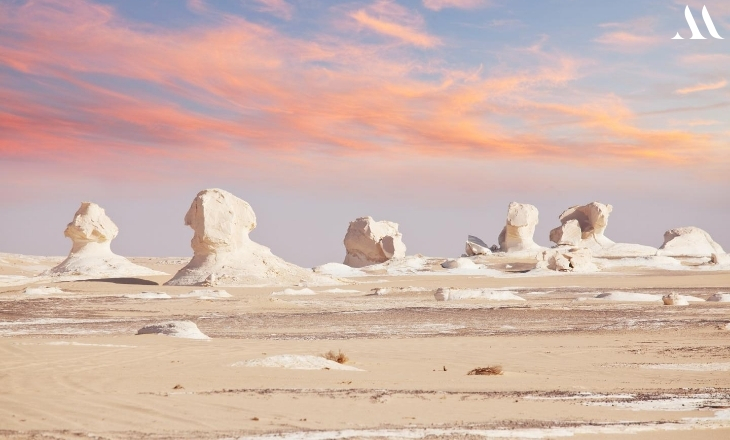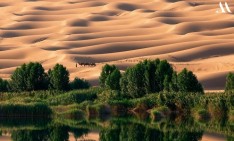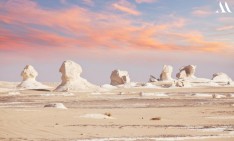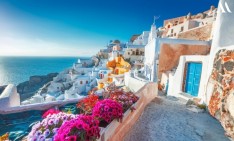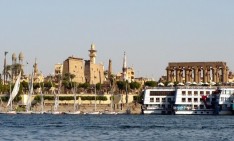Beyond the famously known Nile and Pyramids, approximately 500 km southwest of Cairo, lies a bizarre landscape in the undulating emptiness of the Sahara from the time of the dinosaurs. This place is called the "White Desert." Located in Egypt’s Western Desert, between the Bahariya Oasis and the Farafra Oasis depression, it offers a striking play of vivid, monochrome compositions.
The abstract rock formations are so white during the day that they are blinding, and under the full moon, they become so illuminated that they light up the ground.
In simple terms, these rocks are essentially chalk, but geologically speaking, they are far more complex. The White Desert provides a glimpse into the world of natural history, paleontology, and geology that predates the continents as we know them. Approximately 80 million years ago, this region was once a seabed. As the water receded, what was left behind were blocks of calcium rocks, limestone, quartz, and pyrites.
.jpg)
Slow erosion caused by sandstorms over centuries has shaped these rocks into some truly fascinating patterns. You will come across rocks that resemble food, such as "mushrooms" and "ice cream cones," as well as those shaped like animals, including "chickens," "camels," and even a sphinx. Some have been given more sophisticated names, like "Inselberg" and "the Monolith." In this barren yet surreal landscape of white, pink, and blue hues, you can also find fossils of sea creatures and remnants of other unseen species if you look closely.
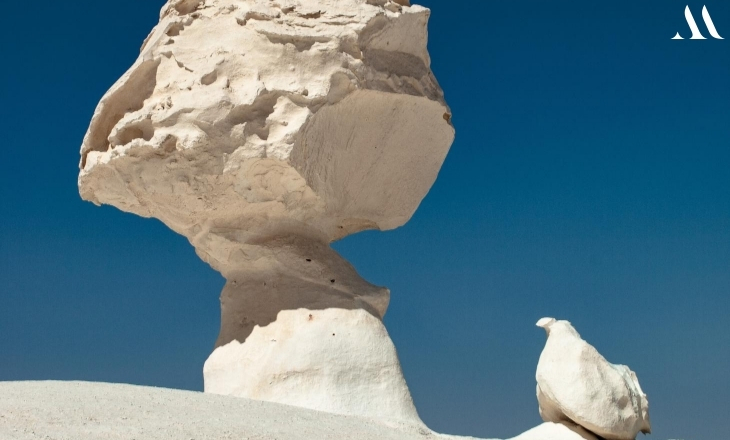
A little ahead is a unique formation, Crystal Mountain, a small rocky hill next to the highway. It is not crystal but Barite, a substance that is less hard than crystals.
Agabat Valley
The valley is small but unusually formed, earning its place on the list of natural attractions. Here, the yellow dunes of the Sahara Desert meet the white cliffs of the White Desert. Red, small mountains rise from the base of the valley, resembling contemporary art that depicts the ancient era, glowing with the sun's rise and set. There are no settlements in this valley, but the people you’ll encounter are travelers visiting on escorted tours.
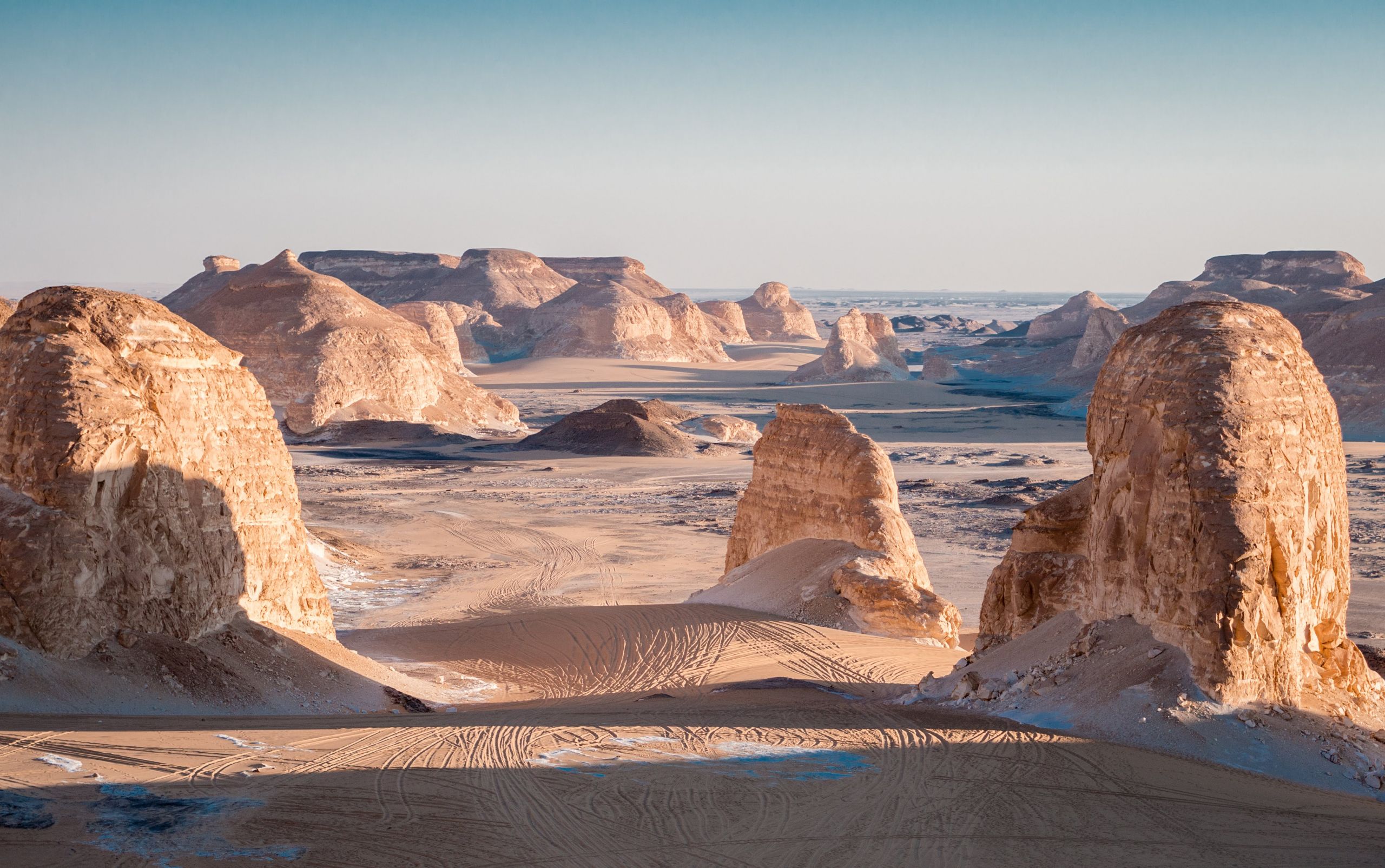
Black Desert
Closer to Bahariya, about a half-hour’s drive to the southwest, lies an area known as the Black Desert. It is a dark, rocky landscape with layers of basalt, volcanic rock dolerite, ferruginous quartzite, and sandstone. A blackish powdery layer atop the yellow-reddish peaks that erupt from the surface speaks to the volcanic activity that occurred long ago in this region.
The view from the top of one of the mountains presents a strange panorama, as if you’ve been teleported to another planet.
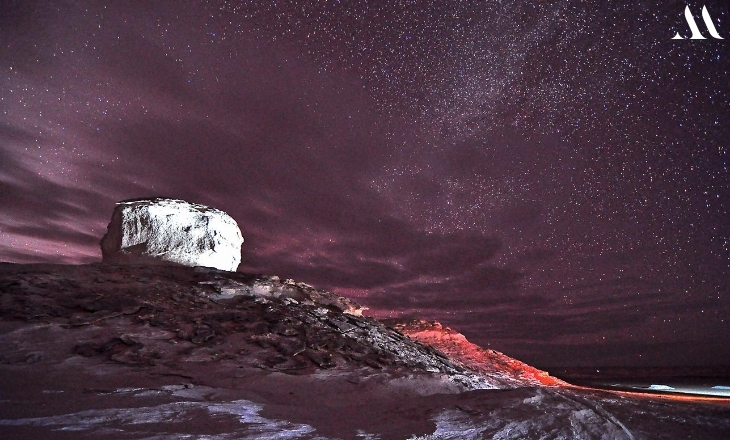
A special guided tour will give you an earthy experience.
The Bedouin guide and driver will prepare a local meal consisting of lentil soup with potatoes and rice and grilled meat cooked over the fire.
If you stay an extra night upon request, they might prepare other delicacies, such as Vermicelli Soup, pasta, vegetables, and meat! With the limited resources available, you can’t help but admire their ingenuity in creating such delicious meals. The Bedouins are also skilled in local music, songs, and chants. It’s a mesmerizing experience to settle around the campfire and listen to the deep, resonating songs of the land that the Bedouins sing.
After dinner, you may be visited by a friendly fox. Keep your camera ready, but remember to be non-intrusive. After all, everyone has to eat.
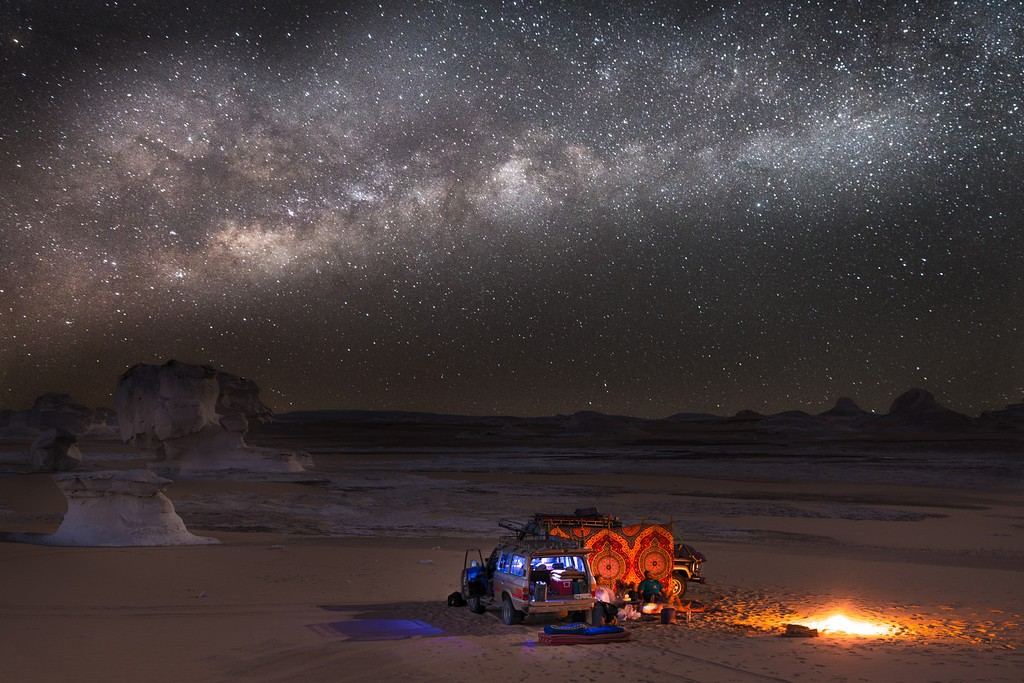
In 2002, the Egyptian government declared the desert a Natural Protectorate. The decree aims to keep the area as unspoiled as possible; inhabitation in or near the desert has been banned. Only private tours are allowed and are conducted under strict supervision, where you can go and camp, which must include a local Bedouin guide.
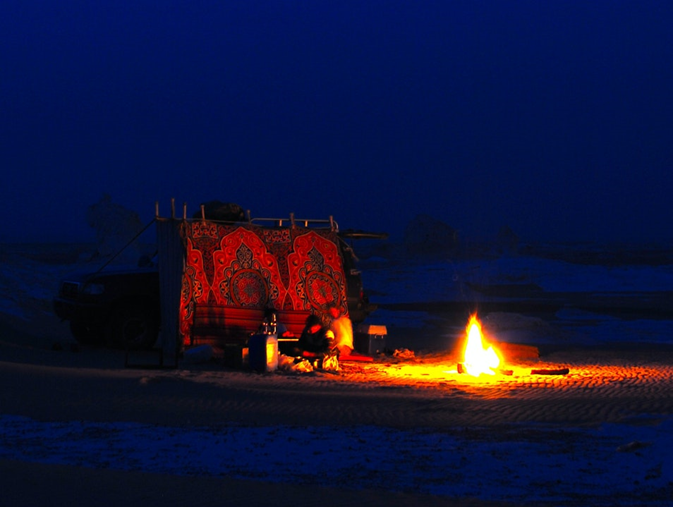
A journey to Bahariya and surrounding sites include:
The Bahariya Oasis is perhaps the most accessible oasis to Cairo, at a distance of 365 km. Bahariya is the best starting point for exploring the White and Black Deserts. Regular vehicles can drive the first few kilometers off the Bahariya–Dakhla road, but only 4x4 can venture deeper into the desert area. The Black Desert is closer to Bahariya, just a half-hour drive away, and because of this proximity, more people are seen here than in the White Desert.
Black hills surround Bahariya Oasis and are naturally provided with water from many underground springs, including a thermal spring with therapeutic properties that emerges in the Bedouin village of Bawiti. The stark contrast of the greenery here against an arid backdrop makes it an interesting study. Small villages in this oasis have been inhabited since ancient Egypt and Roman times, with agriculture as one of their main trades. It is still a major producer of dates, mangoes, guavas, and olives.
Bahariya Oasis is strategically placed in the Libya-Nile Valley, making it an important point on caravan routes. The recent findings of golden mummies in the “Valley of Mummies”, which supposedly contain 5,000 to 10,000 mummies, have put the oasis on the tourist map. How!
What you can do at the site:
|
A private tour from Cairo includes:
|
Packing for the Desert Tour:
|
OTHER CAMPGROUNDS IN EGYPT:
|
| Tags ~ White Desert Egypt Information, white desert in Egypt, Camping in White Desert, Rock formations in White desert, Bahariya Oasis, Farafra oasis, Egypt natural wonder |
.png)

